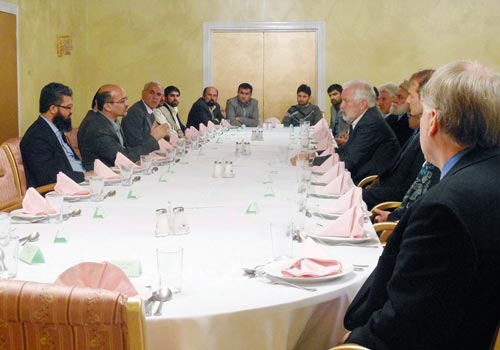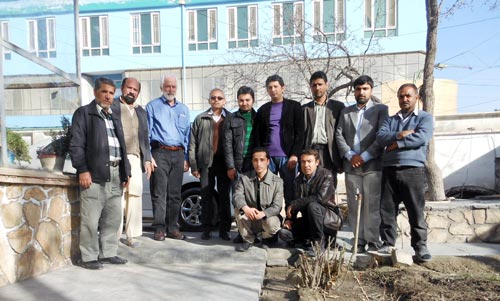 For over 10 years, CIMMYT has been working assiduously with the national agriculture research system of Afghanistan to contribute to the war-torn country’s sustainable agricultural growth and research and development. So far, the joint efforts have led to the release of 12 wheat, 4 maize, and 2 barley varieties. As wheat and maize together account for about 84% of cereal acreage and production in Afghanistan, the work continues. During 5-7 March 2013, CIMMYT director general Thomas Lumpkin visited Afghanistan to observe CIMMYT activities and initiate a dialogue on further cooperation.
For over 10 years, CIMMYT has been working assiduously with the national agriculture research system of Afghanistan to contribute to the war-torn country’s sustainable agricultural growth and research and development. So far, the joint efforts have led to the release of 12 wheat, 4 maize, and 2 barley varieties. As wheat and maize together account for about 84% of cereal acreage and production in Afghanistan, the work continues. During 5-7 March 2013, CIMMYT director general Thomas Lumpkin visited Afghanistan to observe CIMMYT activities and initiate a dialogue on further cooperation.
During a tour of the Kabul-based research station of the Agricultural Research Institute of Afghanistan (ARIA) at Darulaman, station manager Gul Zaman informed Lumpkin that 70-80% of the field experiments carried out at the station were ARIA-CIMMYT wheat trials. Lumpkin observed that the station was in dire need of reconstruction, as it lacked proper infrastructure and all farm machinery was kept outside. Lumpkin also met with Qasem Obaidi (ARIA director), Abdullahjan Ahmadzai (Agricultural Extension and Development director general), Nasrullah Bakhtani (Policy and Planning director general), Haqiqatpal Rabani (Statistics and Marketing director), and S.D. Pakbin (ARIA technical advisor) to assess the needs of Ministry of Agriculture, Irrigation and Livestock (MAIL). Ahmadzai updated Lumpkin on the current involvement of CIMMYT-Afghanistan in drafting a longterm R&D strategy document for the country. “CIMMYT could also bring in the latest technologies, such as conservation agriculture, precision agriculture, and the use of cell phones for extension services,” commented Lumpkin. Other areas requiring assistance, according to Obaidi, include a gene bank, soil and pathological laboratories, technical support in basic research, capacity building, and R&D for agricultural machinery.
Abdul Ghani Ghuriani, deputy minister for technical affairs at MAIL, then hosted a dinner reception for Lumpkin and representatives from ICARDA, FAO, USDA, USAID, JICA, private seed enterprises, MAIL officials, and other partners. During the lively dinner discussion, the deputy minister suggested that CIMMYT submits a proposal to establish a permanent facility to provide long term R&D support to the national agriculture research system and other stakeholders in the country. Mir Dad Panjsheri, MAIL chief advisor, then highlighted the issue of sustainability of any intervention brought by development agencies, acknowledged the continued support from CIMMYT, and suggested new collaboration areas: “It is important to carry out multi-crop, interdisciplinary research. We would appreciate CIMMYT’s assistance with diversification of the cropping sequence in farmers’ fields, genetic resource conservation, and support of home-grown breeding programs.”
Prior to his departure, Lumpkin held a series of discussions with Kabul-based USAID, USDA, AusAID, and ACIAR officials. Both USAID and AusAID welcomed the idea of a BISA-type facility in Afghanistan, as it could act as a platform for other CG centers, in-country partners, and foreign universities to address Afghanistan’s R&D gaps programmatically and sustainably.
 Nutrition, health and food security
Nutrition, health and food security 
